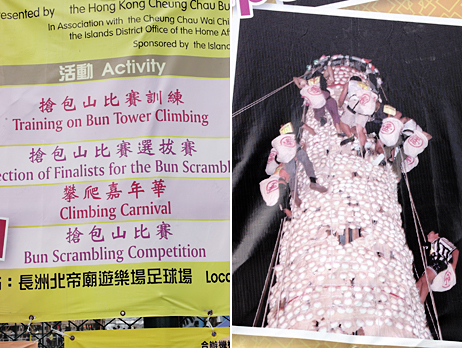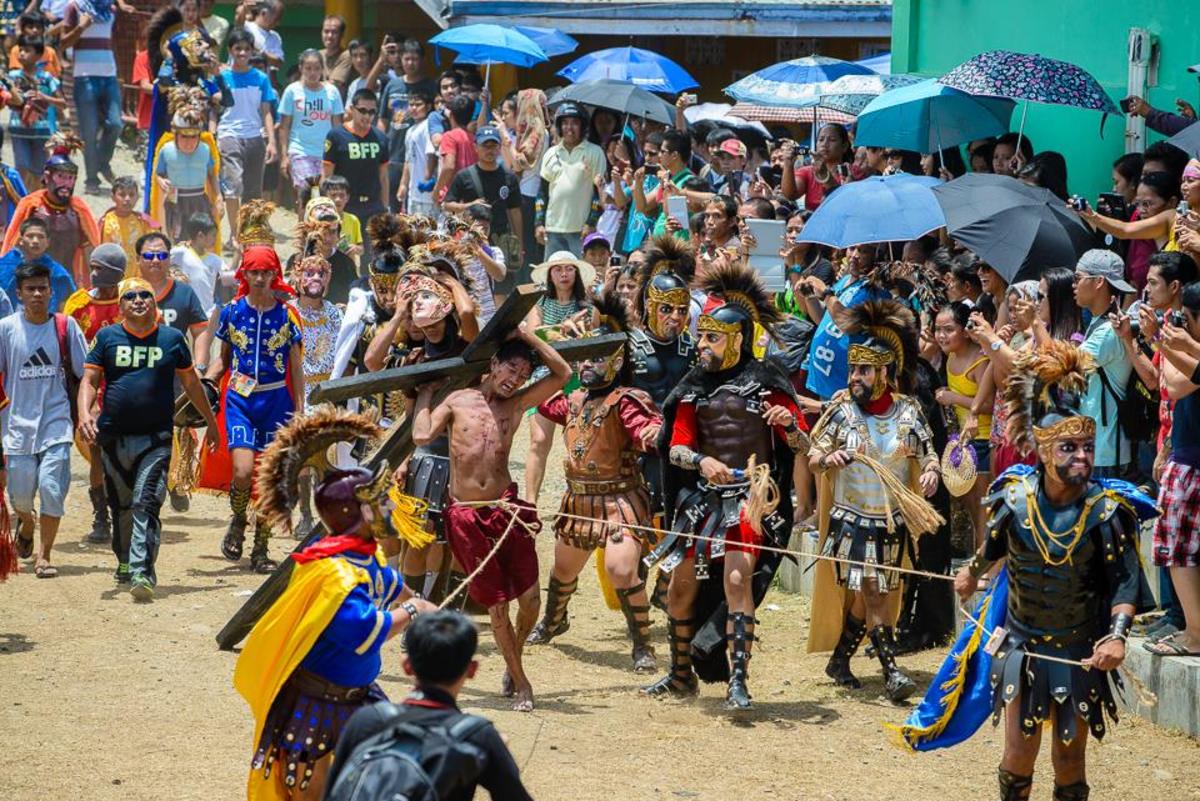Most Unique Festivals in the World





Merrymaking Galore
How do we celebrate festivals?
Colorful costumes and reenactments are always the main features of the festivities, including the street parade and merrymaking. Both foreign and local tourists flock and participate in a celebration that they believe can cure their illnesses or I may say, part of what they believe in and part of their culture.
Every state, regions, county or towns have their own way of merrymaking or festivals. Around the world, this travel advisory can really catch your attention. If you happen to travel in one of these countries, you better mark it in your calendar or organizer and be part of the festivities.
Let's visit:
1) Lopburi Monkey Buffet in Lopburi, Thailand.
This is a primate party. This feast celebrates the greedy appetites of the city’s most persistent (and fondly regarded) pests: monkeys. It is being celebrated on the last weekend of November.
Highlights. The macaque monkeys that populate Lopburi are well-known gluttons: anyone who leaves a snack unattended for a split second is sure to have it snatched away by a furry “friend.” But residents of the city decided in 1989 that the best way to deal with the monkeys was to embrace them. So every year, all the monkeys’ favorite morsels—including peanuts, cucumbers, bananas, and raw crabs—are laid out in front of the Pra Prang Sam Yot temple. There’s a tea party too (although Lopburi’s monkeys are known to prefer Coca-Cola).
2) Inti Raymi in Cuzco, Peru is celebrated on June 24th every year.
Highlights. Reenactment of an ancient Incan sun ceremony. Since 1944, hundreds of actors gather, dressed in traditional Incan garb (colorful tunics for the lower class, llama wool for the upper class, and vicuña wool for royalty). In a procession from the Qorikancha, the Incan temple dedicated to the Sun God, the lucky man chosen to portray the emperor is carried on a golden throne to the ancient fortress of Sacsayhuamán, where he asks for the sun’s blessing in Classical Quechua, the original language of the Incas.
History: For the Incans, the Sun God Inti was the creator of all life—and his return every year after a long, cold winter was enthusiastically celebrated on the winter solstice. The festival traditionally included offerings such as coca tea and a white sacrificial llama—these days, the sacrifice is only a stage act.
3) The Anastenaria (the feast of Saint Constantine and Saint Helena) begins on May 21st in Northern Greece and Southern Bulgaria.The eight days of dancing, all-night church services, and festivities end with a sacrifice of a sacred bull, from which every village family is given meat and sandals made from the hide.
Highlights: Fire walking! During this eight-day religious celebration for those who celebrate the Anastenaria, worshippers are ostensibly possessed by Saint Constantine and are able to walk, dance, and stomp barefooted over fire. Live musicians play to accompany the dancers, and as the music gets faster, worshippers “touched by the saint” say they don’t feel the flames.
Why: The legend behind this ritual dates back to the Middle Ages, when the Church of Saint Constantine accidentally caught fire. According to the story, as flames engulfed the church, the icons of the saint and of his mother, Saint Helena, could be heard crying for help from the inside. The brave churchgoers who ran in to rescue the icons were unscathed by the fire.
4) Hadaka Matsuri throughout Japan on the third Sunday of February.
Highlights: The naked man festival. On one of the coldest nights of the year, thousands of men all around Japan strip down to loincloths (or even less) to test their manhood and secure luck in this traditional celebration. The rituals vary from town to town; in Okayama, for example, men purify themselves in water from the Yoshii river, run once around the Saidaiji Temple, and then try to catch sacred sticks that priests throw into the crowd (those who do are promised a year of happiness); in Konomiya, one fully naked man joins the crowd each year, and the others who find and touch him are granted a prosperous year.
History: Some 1,300 years ago, Buddhist monks initiated the practice as a way to purify their spirits. It subsequently evolved into a Shinto test of manhood, and then into the rite of passage (and fun Kodak moment) it is today.
5) La Tomatina in Buñol, Spain celebrated during the last Wednesday in August.
Highlights: The world’s largest food fight. Each year some 30,000 people (including locals and many visitors) fill this town’s main square to hurl locally grown tomatoes at each other. Tractors ride through the streets dumping piles of red, squishy ammunition—and for 90 minutes it’s a marinara free-for-all.
History: Well, why not?Wonderfully, there’s no explanation for how this tradition began. While sources agree that Buñol’s first tomato was thrown in 1944 or 1945, no one’s sure whether the toss occurred in celebration of Saint Louis Bertrand, the town’s patron saint; as a form of antireligious protest; or as just a whimsical impulse after a tomato cart overturned.
6) Night of the Radishes in Oaxaca, Mexico on December 23rd.
Highlights: Radish-carving contest, a competition for horticulturists to carve the indigenous regional vegetable, the radish, into figures celebrating the birth of Jesus. Elaborate historical scenes are depicted in radishes (with the use of onions, cauliflower, and corn to decorate), from the Virgin Mary with the three wise men to Emiliano Zapata on his horse backed by the Liberation Army of the South.
History: This festival developed as so many modern-day holidays do: a marketing ploy. Since 1897, Oaxacan farmers have sold their produce at the Christmas Vigil Market in the town’s main zocalo; over the years, to make their wares more eye-catching, they began carving figures out of their products. The ad hoc ad campaign became a local tradition and is now celebrated every year, with a cash prize for the best carving and the respect of the town.
7) Cheung Chau’s Bun Festival in Cheung Chau, Hong Kong celebrated during the eight day of the fourth moon in the Chinese calendar that falls in May.
Highlights: Race to the top of a tower of baked goods. To drive away evil spirits and ensure smooth sailing, the seafaring residents of Cheung Chau (an island off the coast of Hong Kong) disguise themselves as deities. But the really fun part comes when three 60-foot towers, covered from top to bottom with doughy pastries called sweet buns, are set up in front of the temple of Pak Tai. People shimmy up the bun towers, grabbing as many as they can; the more they gather, the better their luck will be for the year ahead. The ritual was abandoned after a tower collapsed in 1978, but has since resumed (using plastic towers).
History: For some 2,500 years, the main livelihood for Cheung Chau residents has been fishing. The bun festival, started in the 18th century by a local, is an event to appease the spirits of the dead killed in the past by shipwreck, pirates, or plague.
8) Beer Day throughout Iceland is celebrated on March 1st every year.
Highlights:Nationwide beer-drinking party, an excuse for a runtur—otherwise known as a pub crawl. Icelanders love their beer, so this all-day celebration gives them plenty of chances to raise their glasses of Litli-Jón, Thule, or Viking Dimmur (all local brews). While offices and banks don’t change their hours for this joyous occasion, pubs do stay open later than usual.
History: The holiday celebrates the repeal of the country’s 75-year ban on beer. All alcohol was prohibited in Iceland from 1915 to 1922—but it wasn’t until 1989 that beer was legalized. Understandably, great rejoicing ensued.
9) Nenana Ice Classic in Nenana, Alaska.
Highlights: Spring ice-melting lottery. Alaska’s longest-running betting lottery is a contest to guess the exact time and day that the winter ice will crack and make way for springtime. Locals set a giant wooden structure on the ice and tie it to a clock on the shore. When the ice gives way, the rope pulls the clock, stopping it and declaring a winner. Tickets cost $2.50; the largest pot to date is $303,895, given in 2008 to a single ticket holder.
History:It was during an especially long winter in 1917 that a group of railroad engineers first placed bets on when the ice on the Tanana River would break. The next year, a few more folks got in on the act, and by 2008, more than 240,000 tickets were sold for the year’s jackpot.
10) Nyepi Day throughout Bali in Indonesia. It falls on Bali's Lunar New Year.
Highlights: Silent Night. Balinese ring in their New Year in an uncommon way: in total silence. Pecalangs, or traditional Balinese security guards, patrol the streets to make sure people are at home, contemplating what they want out of life without the distraction of lights, television, radios, sex, food, or talking. Tourists are warned to stay inside their hotels out of respect (but are allowed to watch TV as long as they keep the volume way down).
History: This Hindu holiday is a time for introspection. Nyepi Day follows a series of cleansing rituals, which include cleaning all effigies from all the village temples in rivers and an “exorcism“ of demons, followed by carnivals where puppets with bulging eyes, fangs, and wild hair are burnt to chase away evil spirits.
So, I can conclude that festivals depend also on the religious beliefs in every country or just the hang of it to make everyone happy.








